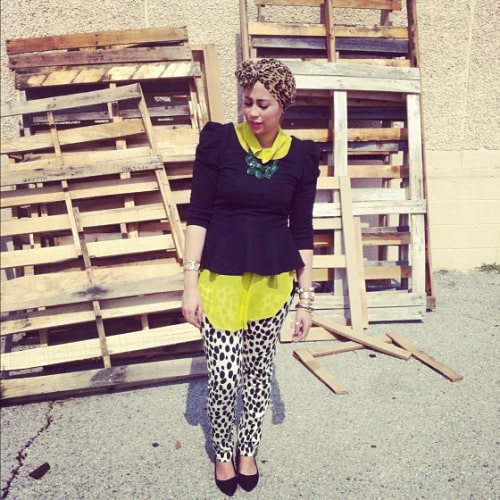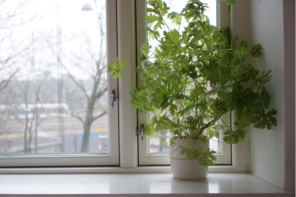Feminism is not an immutable and easily-defined concept. It is conditioned by culture, religion, politics, education and other social factors. The secular-humanist approach to feminism has long dominated global discourses on gender equality and women’s rights. However, the rise of the ‘trendy hijabistas’[1] is seen, by some, as a way of challenging the secular humanist approach and insidious stereotypes on hijabi women. It serves as a tool through which Muslim women can reconcile their beliefs with a desire to look fashionable within a western context.
The term ‘epitome of feminism’, featured in the title, is one of the positive comments that Noor Tagouri, a hijabi journalist, received for her recent decision to appear in Playboy magazine. In the eyes of the social media commentator, Tagouri was defying stereotypes, rooted in (neo)colonial discourses, that veiled Muslim women are oppressed. Tagouri explained how being a hijabi journalist ‘empowers her in demystifying the stigma surrounding Muslim women.’[2] Her modus operandi resonates with other hijabi fashionistas like Dina Tokio, Ascia AKF, Habiba da Silva and many more who seek to undermine these stereotypes in the context of rising Islamophobia.
But is the rise of the social phenomenon truly a symbol for empowerment? Or does it inadvertently strengthen intersecting forms of oppression against Muslim women of lower socioeconomic backgrounds?
Like many, I completely acknowledge that Muslim women are not a monolithic entity. As a result, the ‘veil’ or ‘hijab’ has a different meaning depending on the individual wearing it. In Re-orienting Western feminisms Chilla Bullbeck explains how attitudes to the veil differ depending on the country. For instance, in Iran the veil is enforced on women by state law, whereas in France it is prohibited under republican secular laws.[3] This has created a myriad of ways to perceive the veil globally. But, a major on-going debate about the ‘veil’ is the extent to which it symbolises modesty. For trendy hijabistas like Dina Tokio and Ascia AKF, their glamourous clothing lines and make-up tutorials are compatible with Islamic guidance on modesty, beauty and piety.
Many of course disagree with this perspective such as the author of Love in a Headscarf, Shelina Janmohamed who explained that ‘today’s fashion industry is about consumerism and objectification – buy, buy, buy and be judged by what you wear. Muslim fashion is teetering between asserting a Muslim woman’s right to be beautiful and well-turned out, and buying more stuff than you need, and being judged by your clothes – both of which are the opposite of Islamic values.’[4] Islam, as indicated in verse 23:40 of the Qur’an, encourages its followers to lower their gaze to avoid attracting attention and making others uncomfortable. Janmohamed is highlighting the potential for ‘modest fashion’ to stray away from Islamic guidance on beauty, modesty and piety.

Photo by rana ossama (flickr, CC BY-SA 2.0)
While Janmohamed reveals these potential contradictions, other anthropologists like Emma Tarlo have come to different conclusions. In Visibly Muslim: Fashion, politics, faith, Tarlo presents the ways in which Muslim women raised in western countries face inter-generational tensions over styles of dress. While the mothers favour culturally traditional clothing, the daughters seek to balance such pressure by re-styling western clothes with hijab. Coming from an anthropological background, Tarlo focussed on the cosmopolitan university-educated Muslim milieu and less so on the working-class Muslim milieu.[5] Indeed, the biggest names in this fashion trend come from prosperous countries like America, Britain and Kuwait as portrayed through the high-end clothing.
Many hijabistas like Tagouri claim their work encourages Muslim girls to be ‘their most authentic self’ and to rectify ‘misrepresentations (of Muslims) in mainstream media today’.[6] But given their affluent socioeconomic background, many trendy hijabistas like Tagouri are (inadvertently) perpetuating an image of an ‘acceptable hijabi Muslim girl’ in a western capitalist context. When I look at the front-cover of magazines featuring hijabi women, they are most often light-skinned, thin and alluring, albeit, stereotypically European looking. For me, it reinforces racist ideas about beauty in the west and east where fair-skinned women are considered more beautiful than their darker-skinned counterparts.
While these new trendy hijabistas are trying to defy misrepresentations about them amongst western non-Muslims, their image has the potential to force many Muslim girls into an essentialising straight-jacket. One in which they must resemble the light-skinned, thin and glamourous hijabistas in order to feel accepted in their hijab within a western context.
Recently in the UK, a report published by the Women and Equalities Committee of MPs stipulated that Muslim women still feared wearing a headscarf ‘restricted their employment opportunities’. Indeed, according to the report, Muslim people face the highest level of unemployment of all religious and ethnic groups at 12.8% compared to 5.4% for the general population.[7] Even in America, hate crimes against Muslim Americans and mosques tripled, according to a California State University researcher, who said the country had not seen such a high frequency of incidents since the September 11 terrorist attacks.[8] Statistics on rising hate crime and unemployment levels suggests structural discrimination against Muslim women is still rife.
From these statistics, it appears that the trendy hijabista movement does not address the issue of structural discrimination against Muslim women in the west. The movement is clouded in contradictions as it seeks to create a sisterhood, yet seems to be concerned mainly with correcting the perceptions of non-Muslims about Muslim women. Some trendy hijabistas, as demonstrated in Tagouri’s interview with Playboy, are more concerned with white morality than the conditions these morals cause Muslim women of disadvantaged socioeconomic backgrounds and of darker ethnicities.
Throughout the recent controversies surrounding ‘trendy hijabistas’, many criticisms have circulated on the web. However, my argument which criticises the implications of selling images of glamorous light-skinned hijabi women on darker skinned hijabi women has received little attention and remains under-researched. This truly emphasises how, as argued by the renowned feminist Nawal el-Saadawi ‘a hierarchical system subjugating people merely because they are born poor, or female, or dark-skinned’ remains stronger than ever in spite of this flourishing social phenomenon.[9]
[1] Olivia Blair, “Noor Tagouri becomes first hijab-wearing Muslim woman to feature in Playboy magazine”, The Independent, 30th September 2016, accessed 1st October 2016.
[2] Blair, “Noor Tagouri becomes first hijab-wearing Muslim woman to feature in Playboy magazine”.
[3] Chilla Bullbeck, Re-orienting Western feminisms: women’s diversity in a postcolonial world, Cambridge University Press, 1998.
[4] Radhika Sanghani, “How the hijab went high-fashion and divided Muslim women”, The Telegraph, 18th February 2016, accessed 1st October 2016.
[5] Sarah Yasin, “An Interview with Emma Tarlo, Author of visibly Muslim”, Patheos, 24th February 2016, accessed 1st October 2016.
[6] Noor Tagouri, “Salam…I know right”,30th September 2016, accessed 1st October 2016.
[7] Graeme Demianyk, “Muslim women face discrimination and stereotype when seeking jobs, committee of MP’s says”, The Huffington Post, 11th August 2016, accessed 1st October 2016.
[8] Sam Levin, “Hate crimes and attacks against Muslims doubled in California last year- report”, The Guardian, 29th July 2016, accessed 1st October 2016.
[9] Nawal el-Saadawi, “Nawal el-Saadawi quotes about patriarchy”, accessed 1st October 2016.
Featured image by Aslan Media (flickr, CC BY-NC-ND 2.0)









